Many people leading a healthy lifestyle have health disorders due to the presence of parasites.Highlighting the body (proper nutrition, physical exercise, hardening procedure) without eliminating the body from the parasite does not have a clear positive effect.According to the World Health Organization, helminths are localized not only in the gastrointestinal tract, but also in important organs: brain, heart, lungs, liver, kidneys.Helminths in their life process distinguish special ingredients - toxins that are poisonous and strong allergens.It is the simplest, fungi and helminths which are triggering mechanisms for many chronic diseases: cholecystitis, cholelithiasis, pancreatitis, colitis, diabetes mellitus, bronchial asthma, atopic dermatitis.
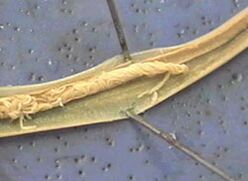
Chronic fatigue, irritation and anxiety, hyperactivity in children, anemia, brittle nails and hair, skin problems, headache, appetite disorders, reduction of immunity - this can be a signal of current disease.With the long -term parasites in the human body, the immune system suffers.In the process of continuous struggle with foreign antibodies, it comes to fatigue, which is the development of secondary immunodeficiency.Diseases with parasites lead to hypovitaminosis, micro deficiency: potassium, copper, manganese, selenium, zinc, magnesium, silicon;Violation of hematopoiesis, hormone failure, vascular permeability violated, protection against body cancer suffered.
For thousands of people, especially planting food, receiving antimicrobial, antiparasit and antiviral ingredients that are active.Decreased in the use of wild plants, fruits, berries, replacement of vegetables and their fruits, heat and industrial treatment causes a decrease in natural use and natural antibiotics.As a result, one becomes a simple victim for many microorganisms.The intensive development of the drug industry that produces antibiotics has led to a decline in immunity.
Determination of parasites
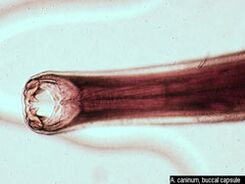
Parasites (from Greek parasitos - overlap, parasites) - lower plant and animal organisms that live outside or inside other organisms (owners) and eat at their expenses.Parasites arise in the process of development of organisms from the form of free living.Their adaptation of certain conditions in life involves the simplicity of their organization, the development of special emphasis, increasing the development of the genital organs, respiratory, which allows for existence in an unclear environment.Parasites include many helminths, fungi, viruses, protozoa, worms, crustaceans, spiders -shaped, insects.The owner of the parasite can be bacteria, the simplest, growing -growth, animals and humans.Parasites undergo complex developmental cycles: sometimes they require a change of 2-3 owners whose body is mid (helminths passing larvae levels) or end (helminths mature, invasive).Parasites cause weakness and deficiency of the host body, causing some diseases.
Helminants can be parasites in all one's tissues and organs, but the most common place in their localization is the food tract.Bull and pork pores, wide tape is prescribed in the upper intestine, as well as Ascaris parasites.Dwarf tabbells are mostly localized at the lower intestine, vlasovs - in the colon, opistorchis - in the liver bile and pancreatic tract, pinworms - on the bottom and on all parts of the large intestine.Therefore, the distribution of various types of helminths along the digestive tract to find the best living conditions gives them the survival of individuals, and creates conditions for the development of several types in the body of one person.
Classification
By distribution:
- Ubiquette - meet anywhere.
- Tropical - distributed in the tropical climate zone.
According to biological and epidemiological features: geohelminths -a disease in which helminths begins to develop in the human body, and then on non -living substrates, more often in the soil.Biohelminths are a disease in which the biological cycle of helminth development must occur in the body of another living beings, except for someone.Distinguishing between the final owners, in the body where helminths develops to a mature, and middle sexual stage, where the parasite is at the larvae or its reproduction is not sexually transmitted.One is more often hosted, less often - mid.Helminthiasis connection is a disease in which parasites are distinguished from the human body with mature or almost mature, as a result of other people's infections or germs themselves.
Depending on the localization of parasites in the body: education - living in the intestinal cavity and other cavities (for example, ascarides, tape) and tissue - living in tissues.
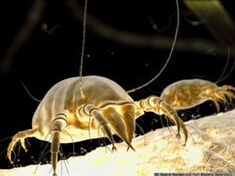
In the home of the owner:
- External (mosquitoes, curtains, leeches, fleas).
- Internal (helminthiasis):
- Round worms (nematod - ascarides, vlasov, pinworms, strungyloids);
- Flat worms:
- trematodes (plates - cat seizures, schistosomes);
- Cestodes (Ribbon Worms - Bull and Pork Tapeworm, Tabbell dwarf, wide tape, echinococcus).
- Bacteriosis (staphylococcus, streptococcus).
- Protosis (amoebas, lamblia, trichomonas, usually owners of chlamydia and aids virus).
- Mycoses (fungal disease) -Examples, candida.
How parasites adjust
- long life (helminths lived in the body for years, and sometimes as many as parasitic owners);
- Ability to suppress or modify the host immune response (immunodeficiency conditions arise, conditions are created for penetration of pathogen agents from the outside, as well as to revive internal infections);
- Many types of helminths, enter the digestive tract, distinguish anti -Enzymes, which save them from death;The digestive process is disrupted, different toxic reactions in gravity appear: urticaria, bronchial asthma, atopic dermatitis;
- Development stage (eggs, larvae, owner change);
- egg ability for years -years to survive in the external environment;
- Sexual reproduction where genetic information is exchanged, and this is the highest stage of development, leading to increased heterogeneous population, that is, parasites become less exposed;
- the absence of immunoprofylaxis, due to weak and unstable immune response;
- Helminth is extensive, many habitats (water, soil, air, growth -growth and animals).
How parasites enter the body

You can be infected not only by dirty hands.Animal hair is a worm carrier (ascaride), lamblia.Pinworms that have fallen from the feathers for 6 months and through dust, toys, carpets, pants and beds and hands fall into the food channel.Dogs through wet breathing spread eggs at a distance of 5 meters (cats to 3 meters).Dog lice also tolerate worm eggs.Soldier eggs enter the body through non -washed vegetables, fruits, berries, vegetables, dirty hands, and even spread to flies.And the wrong -cooked barbecue or homemade pig fat is a path of infection with trichinellosis;Poor salted fish, caviar - opisthorchiasis and wide tape.
Therefore, there are several ways to enter the body:
- alimentary (through infected food, water, dirty hands);
- Household relationships (through household goods, from infected family members, pets);
- Through blood insects;
- Active (where larvae penetrates through the skin or mucous membranes during contact with infected soil, when bathing in open reservoirs).
Prevention
Here are some rules that need to be followed to prevent the penetration of parasites into the body:
- It is not recommended to drink water from natural sources and in unknown areas.
- You cannot eat vegetables and non -washable vegetables.
- It is advisable to be careful with mosquitoes, lice and other insects that can be parasite carriers.It should use special protection methods against them, and in places where there are many of them, wearing pants and long sleeves.
- Before traveling to some countries, it is necessary to vaccinate from typhoid, outbreak, tropical fever and other infectious diseases.Go to places where malaria mosquitoes are found, you should take anti -male tablets.Gathering in a long journey, where lice can, it is important to vaccinate from marked encephalitis.
- Do not let children embrace and kiss dogs, cats and other pets. Take care of pets - take a deworming course.
- Follow personal hygiene rules, maintain home hygiene.
- Perform regular anti -protection courses throughout the family.
Children and parasitic invasion
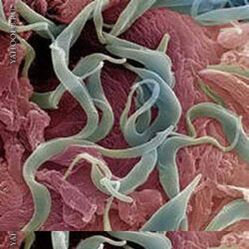
The most vulnerable to the parasite effect is children.They are infected with various types of parasites through dirty hands, sand, soil and water.Sometimes children infection can occur in intrauterine, because bacteria, viruses, simplest viruses, candida and helminth larvae can penetrate the fetus through the placenta with blood flow, as well as during birth through the birth tract.Due to the expansion of their motor activity, at the age of 1.5-3 years, children can be infected at home, walking, in kindergarten when contacting contaminated objects (road shoes, floors, toys, general areas), on the road (playing in sandboxes or on the ground), as well as in contact with animals (vagabonds or homemade on the street).The probability of high intrusion by parasites is observed by non -compliance with hygiene rules (unpredictable hands, eating vegetables and non -washed fruits, eating raw water from natural pools and swimming in it).Only pinworms and dwarf tape worms are sent directly from person to person.Other helminths eggs for cooking must enter the mid -host body or the appropriate environment - soil or water.At the age of 1.5-3 years, the scale of children's infection with helminths can reach 80%.
More than 90% of all helminthic diseases in children are caused by intestinal nematodes in the intestinal lumen (ascaris, pinworms), parasites in the intestinal wall or other organs (ankylostoma, non -cicinella, and ubtuma, and not accumella, and do not interact, and do not interact.or untreated fish or thermal, vegetables and non -washed fruits, non -roasted water from natural reservoirs), no worms (trematodes) and helminths tape (Cestodes).
How can children be infected?
Infection is performed when egg larvae enters the body.Eggs enter the environment with the stains of infected people and animals.They have microscopic dimensions, are very resistant to various influences and can maintain a long life outside the body (inside the soil, on the surface of the object or product, in the linen folds, on the skin).Once in the mouth cavity of children, the worm eggs pass, partly destroys, through acidic, the aggressive environment of the stomach and activated in the intestine, where the condition for adult development from the egg is best.Preschool and preschoolers are very vulnerable to helminthic invasion, as they still have imperfect barriers from the gastrointestinal tract.
Steps -Prevention of Helminthiasis in children: to all family members to adhere to hygiene rules, to try to prevent close relationships with children and their personal goods with pets;The street is important to ensure that children do not choose various objects;prevent contact with animals;It is important to instill a child's hygiene skills (wash their hands with soap after the road and visit the toilet);It is advisable to perform regular wet cleaning at home, wash with soap toys, especially in front of pets, as well as toys brought from walking to home;Carpeters vacate, chair furniture and night chairs;Do not give children and children that are not washed, not enough meat and fish that are not thermal, raw water from natural reservoirs.
Signs of Helminthic Invasion of Children
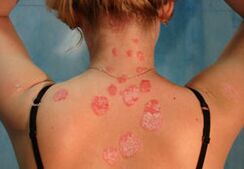
Often, children need to guess about helminthic invasion by indirect signs.The possibility of a helminthic aggression is very high if children have symptoms such as: saliva, nausea, decreased appetite or pathology, pain in spasms around the navel or without any localization, regardless of food intake, impurities, children in the evening, poor desire, poor sleep, leaky,Often parasites lead to body allergies, skin reactions appear in the form of atopic dermatitis (as a rule, it is stubborn, which is difficult for symptom therapy).If worms are found in children or in one of the family members, it is necessary to treat the whole family to prevent the formation of the infection.In this case, it is important to strengthen the steps of hygiene, in particular, boiling and iron in both sides of bed and personal pants.
























